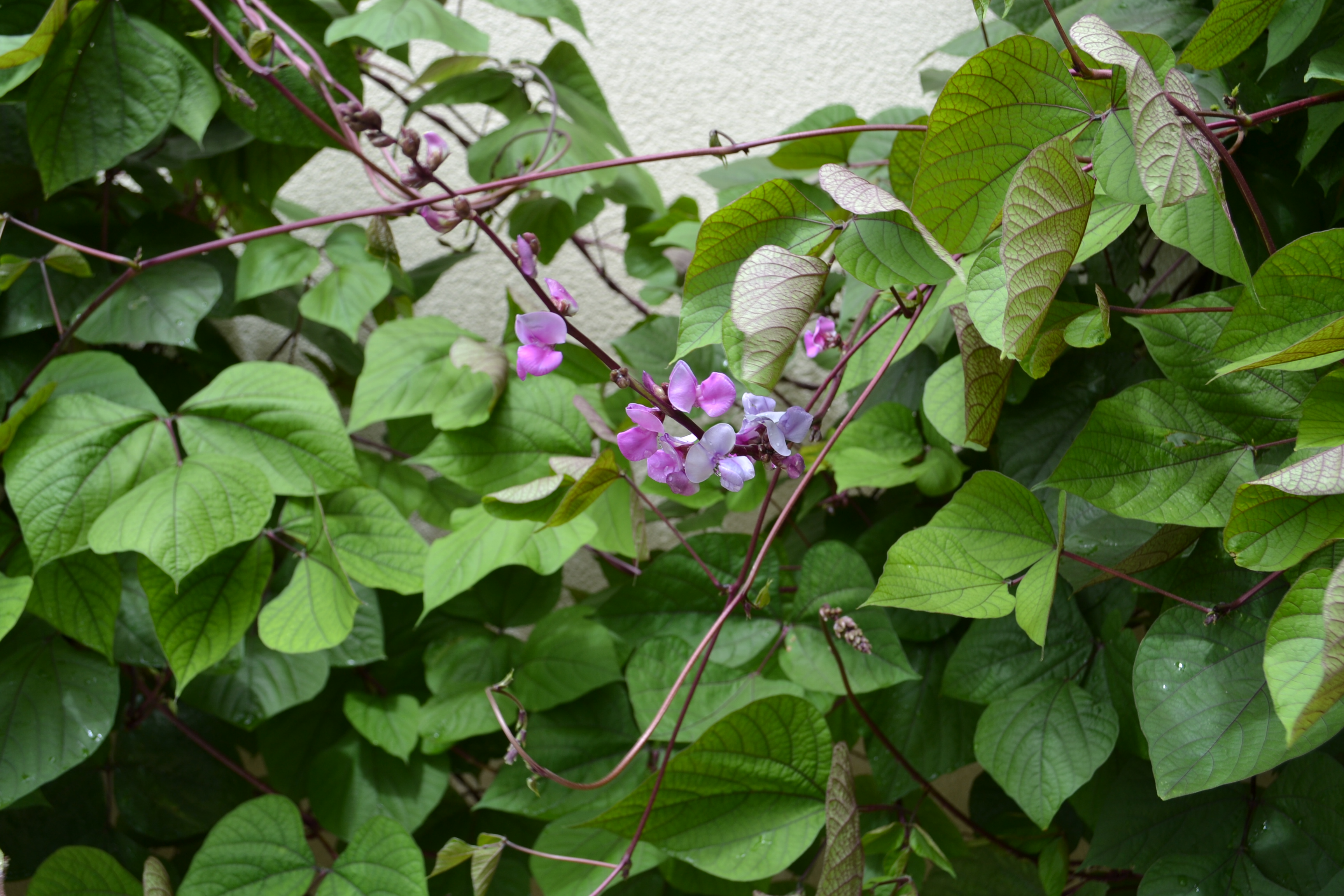
by Beth Bolles | May 6, 2015
Everyone is interested in growing an easy plant that offers interest all throughout the warm season. Look no further than an old favorite, the purple hyacinth bean, Lablab purpurea.
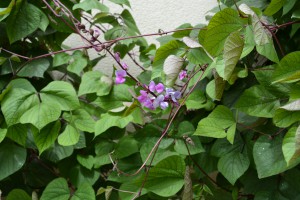
Purple flowers are held above foliage.
An warm season annual vine that grows easily from seeds plants directly in the ground or started in small pots, purple hyacinth bean will quickly cover a trellis, fence, or other sturdy support that you provide. One of the features will be beautiful purple flowers that form on purple stems during the summer. Purple pods will form after the flowers fade and persist until a frost. Mature seeds can be collected and saved for planting the following spring. Seeds that fall to the ground are likely to sprout on their own when soils warm again the following year.
Even though purple hyacinth bean is an edible plant in many parts of the world, it is mostly considered an ornamental in our area. One of the reasons is that raw beans are poisonous and must be properly cooked before eaten. Because of the toxicity of the beans, it is best to plant in the ornamental garden rather than the edible garden.
Additional features of this easy vine are that it is low maintenance, requiring little fertilization and it attracts bees and butterflies. Install seeds or transplants in well drained soil in full sun and you are ensured a plant that will attract attention.
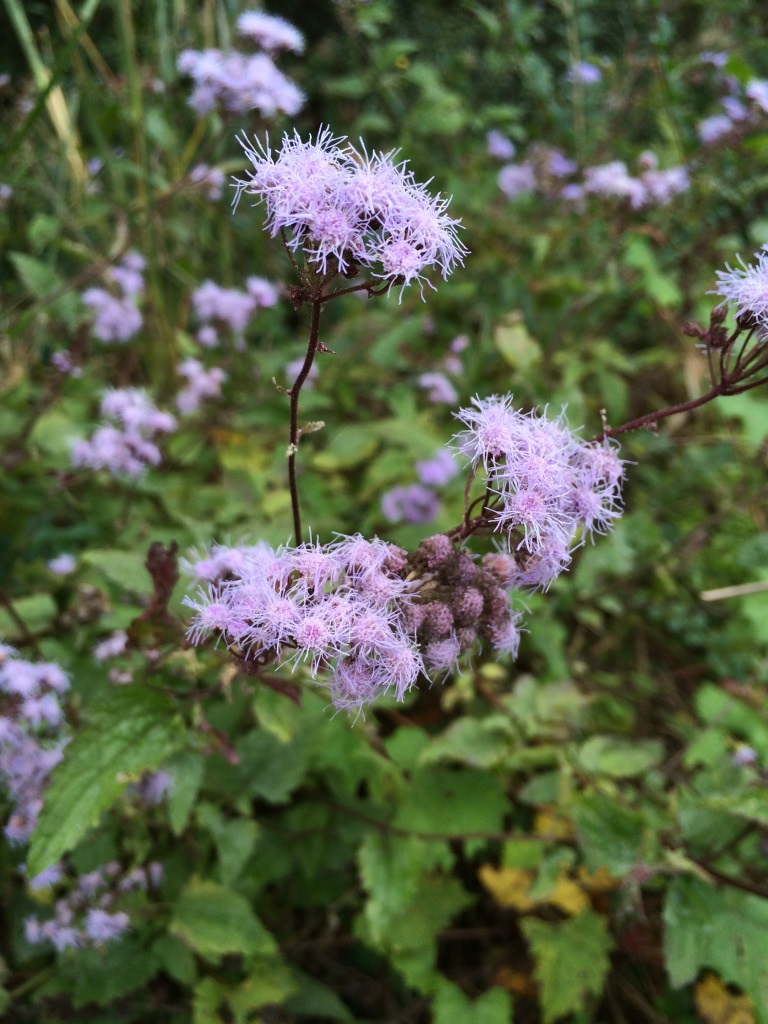
by Mary Salinas | Nov 18, 2014
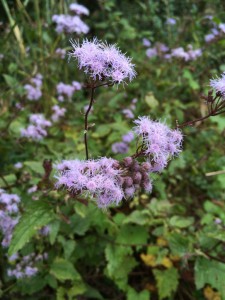
Blue Mistflower – Image Credit Mary Derrick, UF / IFAS
Here’s a beautiful native perennial wildflower that is easy to grow and generally available in the independent nursery trade. In the wild, you can encounter them at the edges of woodlands and ponds as they prefer moist areas. Blue mistflower, Conoclinium coelestinum, performs well as a perennial in the home landscape but does spread easily by seed and will spread in the garden. It also spreads through underground rhizomes which allow it to form large clumps. This is an advantage for the informal garden, however, the gardener who prefers a more formal look will have a bit more maintenance in controlling that spread.
The abundant flowers look like bluish-purple puffballs on the top of the stems. The color is unusual and adds a striking touch in the garden. The bloom season is mid-summer to mid-fall. Butterflies are frequent visitors, making this an excellent addition to your butterfly garden.
Blue mistflower has a full rounded form and will grow to 3 feet under optimum conditions. Leaves are opposite and have a triangular shape. Growth and blooming is best in full sun to part sun conditions.
Give it a try!
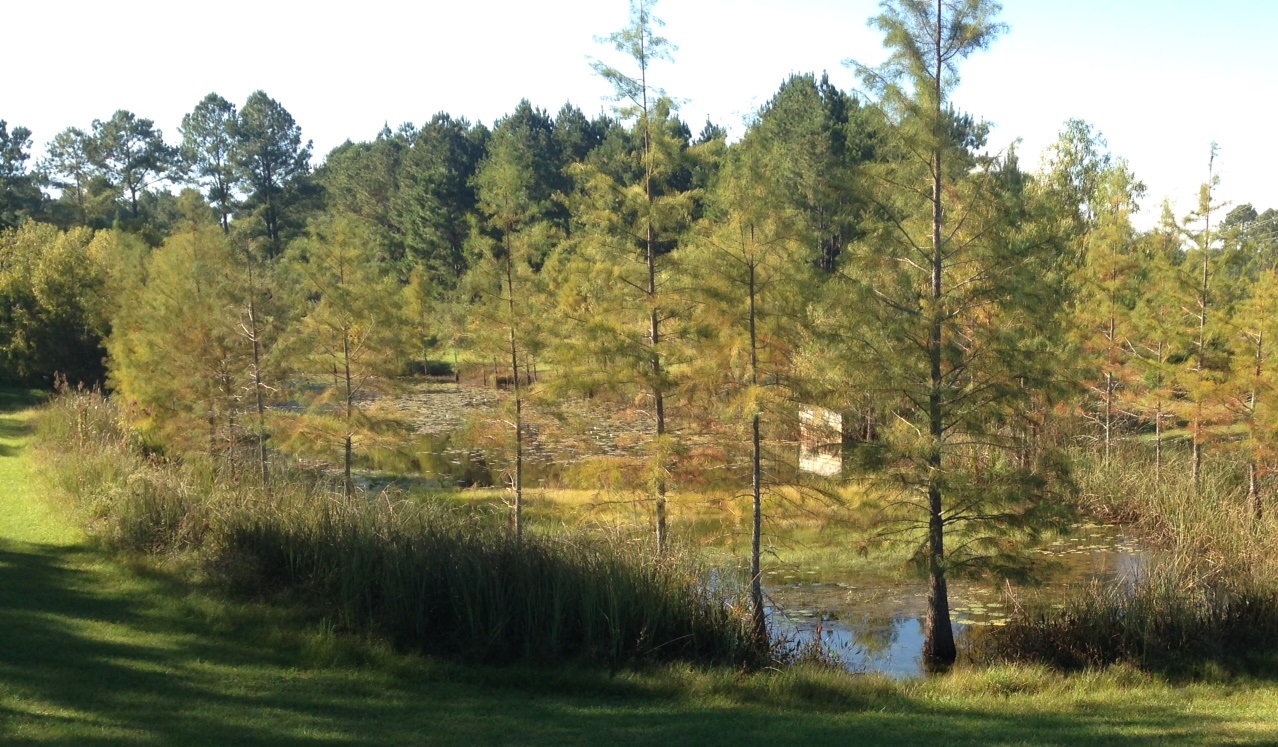
by Carrie Stevenson | Nov 4, 2014
I recently met with a group of community volunteers who are interested in providing more butterfly habitat in our public areas. Monarchs migrating to Mexico this time of year use northwest Florida as a stopover and feeding site, but if host plants are unavailable they cannot sustain a healthy population. In addition, Gulf fritillaries, buckeyes, and swallowtails are spending time in local butterfly gardens, feeding on passion vine, butterfly bush, milkweed, and more.
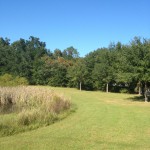
The grassy area between this stormwater pond and woods is an ideal location for a butterfly garden. Willows growing along the edge attract butterflies already. Photo credit: Carrie Stevenson
The volunteers and several county staff visited three publicly-managed stormwater ponds, which are an ideal setting for what some proponents term “Butterflyscaping.” The open space, water source, and diversity of plants along the edge of the ponds lend themselves well to wildlife habitat.
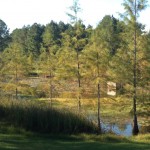
The permanently wet detention pond lined with cypress trees and sawgrass also provides habitat for fish, birds, and reptiles. Photo credit: Carrie Stevenson
When considering adding vegetation to a neighborhood common area, there are several things to consider. First is maintenance. If there’s an annual contract with a landscaping company to mow or maintain an area, you’ll want to have a discussion about excluding the new planting area from mowing to establish new vegetation. You’ll also want to look at the soil and amount of sunlight to determine the best plant choices for the area.
A variety of groundcovers, flowering plants, shrubs and small trees will typically provide food for both caterpillars and adult butterflies. Once established, these new landscape additions will not only provide habitat and color, but may end up reducing maintenance costs as well.
For more information, the UF publication “Community Butterflyscaping” is an excellent resource for landscape design, plant choices, and practical steps toward getting started with a neighborhood or schoolyard project.
by Taylor Vandiver | Oct 7, 2014
I think it’s safe to say fall is officially here. Shouts can be heard from local football stadiums, occasionally a crisp fall breeze will send us looking for a light jacket, and coffee shops are pushing all things pumpkin. Now that we can officially appreciate the cooler fall weather, it may be time to stretch our legs and marvel at the spectacular show of color our landscapes are putting on. Here are a few plants that are showing off this time of year.
Firebush (Hamelia patens) – This charming Florida native will delight everyone with beautiful orange-red flowers throughout most of the year. Hummingbirds and butterflies enjoy the nectar in the flowers. Firebush can reach a height and width of 8 to 12 feet. It is a fast growing plant that will grow well in part to full sun environments.
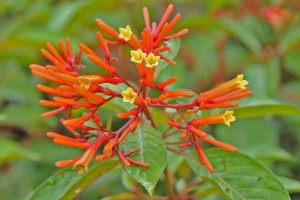
Bright orange-red blooms on a firebush. Photo courtesy UF/IFAS.
Salvia (Salvia spp.) – Salvias are great plants for bringing butterflies and hummingbirds to your garden and as a bonus, they have no serious pests. With hundreds of annual and perennial species coming in an array of colors and sizes, you can easily find one or more to complement your landscape. Salvias perform best in full sun environments and are considered drought tolerant.
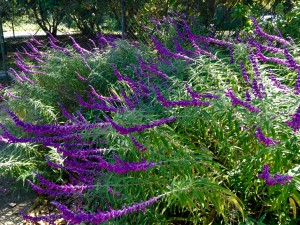
Deep purple blooms on a salvia in the landscape. Photo courtesy Taylor Vandiver.
Turk’s Cap (Malvaviscus arboreus) – Turk’s cap can add a cheerful pop of color at a time when little else is blooming. This old-fashioned Florida-Friendly shrub like perennial is related to the hibiscus. It’s known for its bright red flowers that always seem ready to open, but never do. Turk’s cap starts blooming in summer and keeps going until through winter, unless hit by a hard frost. It can grow in full sun and reach up to ten feet tall and ten feet wide, so give it room to grow. This easy-care native perennial requires little maintenance once it’s established.
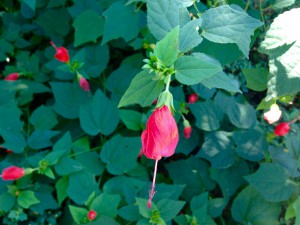
Turk’s cap showing off its unique blooms. Photo courtesy Taylor Vandiver
Coleus (Solenostemon scutellarioides) – When imagining fall color we often don’t consider coleus. However, the vibrant foliage can add interest to any landscape throughout the fall. Coleus is prized for its colorful foliage, which comes in shades of green, yellow, pink, red, and maroon. Coleus varieties can range from one to several feet in height. They can be used in hanging baskets, containers on patios, or in landscape beds. Coleus prefers partial shade and you can pinch the growing stems of young plants frequently to encourage dense foliage. Keep an eye out for mealybugs on coleus and use insecticidal soap if problems develop
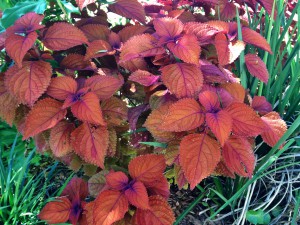
Burnt orange foliage standing out amongst the neutral green of the landscape. Photo courtesy Taylor Vandiver.
Fore more information contact your local extension agent. Also you can visit us at gardeningsolutions.ifas.ufl.edu or edis.ifas.ufl.edu.
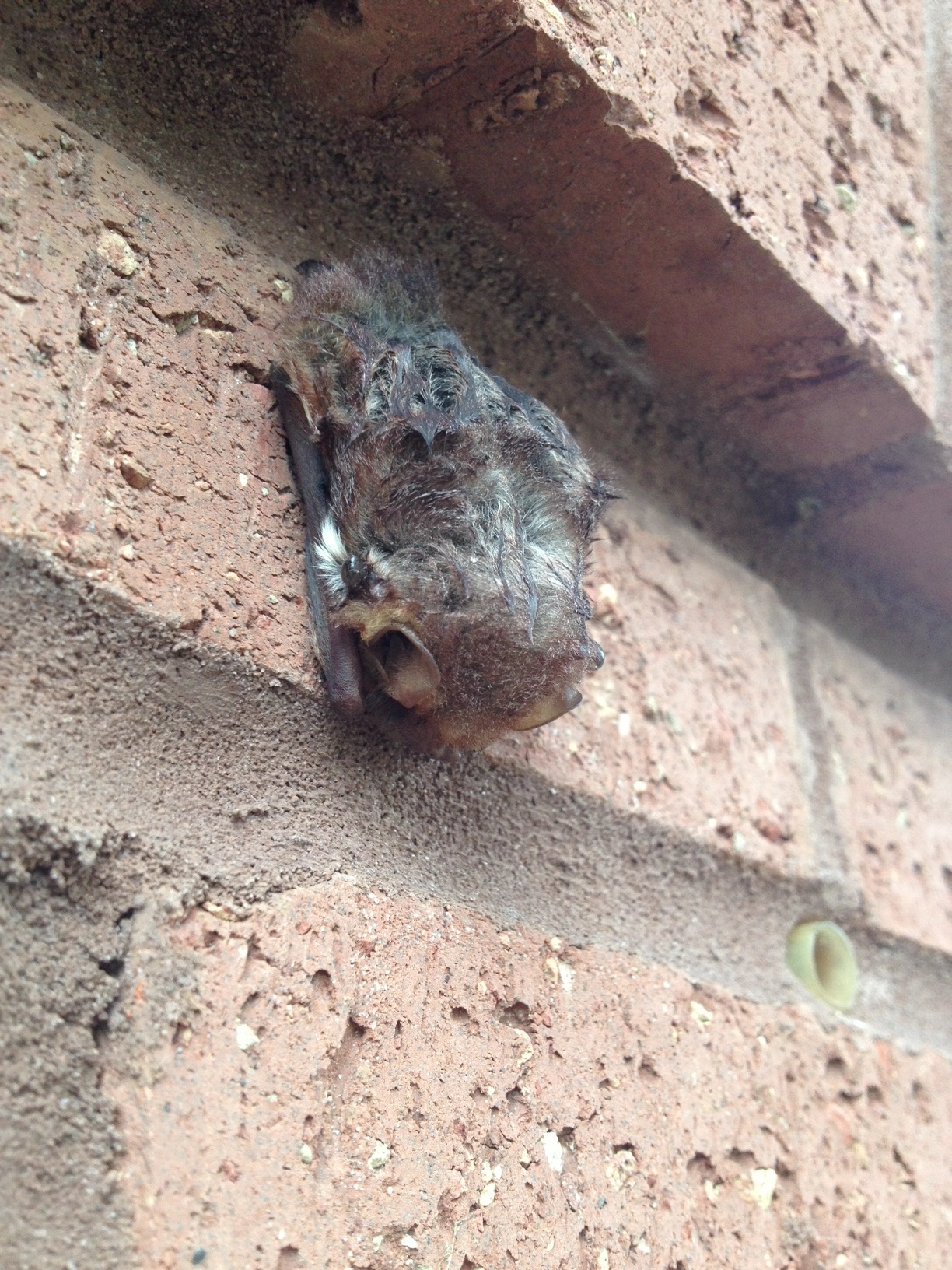
by Carrie Stevenson | Sep 30, 2014
Last week, the Okaloosa County Health Department issued a rabies alert after three bats were determined to have the illness. A “drive-through” rabies vaccine clinic was organized for pets, and warnings were issued throughout the region about making contact with wild animals. One radio broadcast played an interview in which a health department staffer urged people “not to attract wildlife to your yard.” While they were focusing on unsecured trash and pet food, I found this advice unsettling, for as an Extension Agent I’ve promoted the practice of attracting wildlife to yards for many years—birds, butterflies, and even (especially) bats. Raccoons, not bats, have the greatest incidence of rabies (based on data collected from 1992-2011), by a factor of almost seven times that of bats. In the scare of a rabies outbreak, it can be easy to overreact or overlook the many benefits that wildlife provide to our neighborhoods.
There are, of course, practical ways to go about living with wildlife without endangering your health or that of your family and pets (including making sure pets have the rabies vaccine).
Use Caution around Injured Wildlife
Most wildlife rescue organizations do not have the staff to pick up injured animals and ask those who find one to bring them in. However, sick or injured animals may respond aggressively as an intuitive protective measure. If you are taking an animal to a wildlife rehabilitator, be sure to approach it gently and use a blanket or large towel to pick up the animal, and place it gently in a box with a ventilated lid. Great information on responding to injured or deserted animals can be found at the Wildlife Sanctuary of Northwest Florida website. Keep in mind that bats are flying animals and spend almost no time on the ground. They do not chase people and are primarily concerned with catching insect prey. If you find a bat on the ground, it is most likely sick. County animal control or private wildlife responders can also help if you are concerned about interacting with a sick animal.
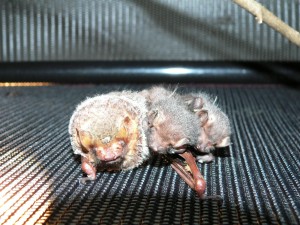
These twin Seminole bat pups were found on the ground with their mother and nursed back to health at the Wildlife Sanctuary of Northwest Florida. Photo credit: Carrie Stevenson
Use Care When Retrieving Dead Animals
When bird flu, West Nile or rabies hits an area, health departments sometimes ask that suspect animals be reported for testing to confirm the cause of death. Even if you are just disposing of the animal, be sure to use gloves and place the animal in a sealable plastic bag to prevent spreading germs, and wash your hands after handling it. If burying, place at least three feet deep and away from wells or water sources.
Enjoy Wildlife from a Distance
Disturbing healthy animals while they are feeding or resting can cause unnecessary stress and reduce their hunting success. Animals’ natural behaviors are fascinating to watch, so be sure and do so from a respectful distance to allow them to interact normally with their environment.
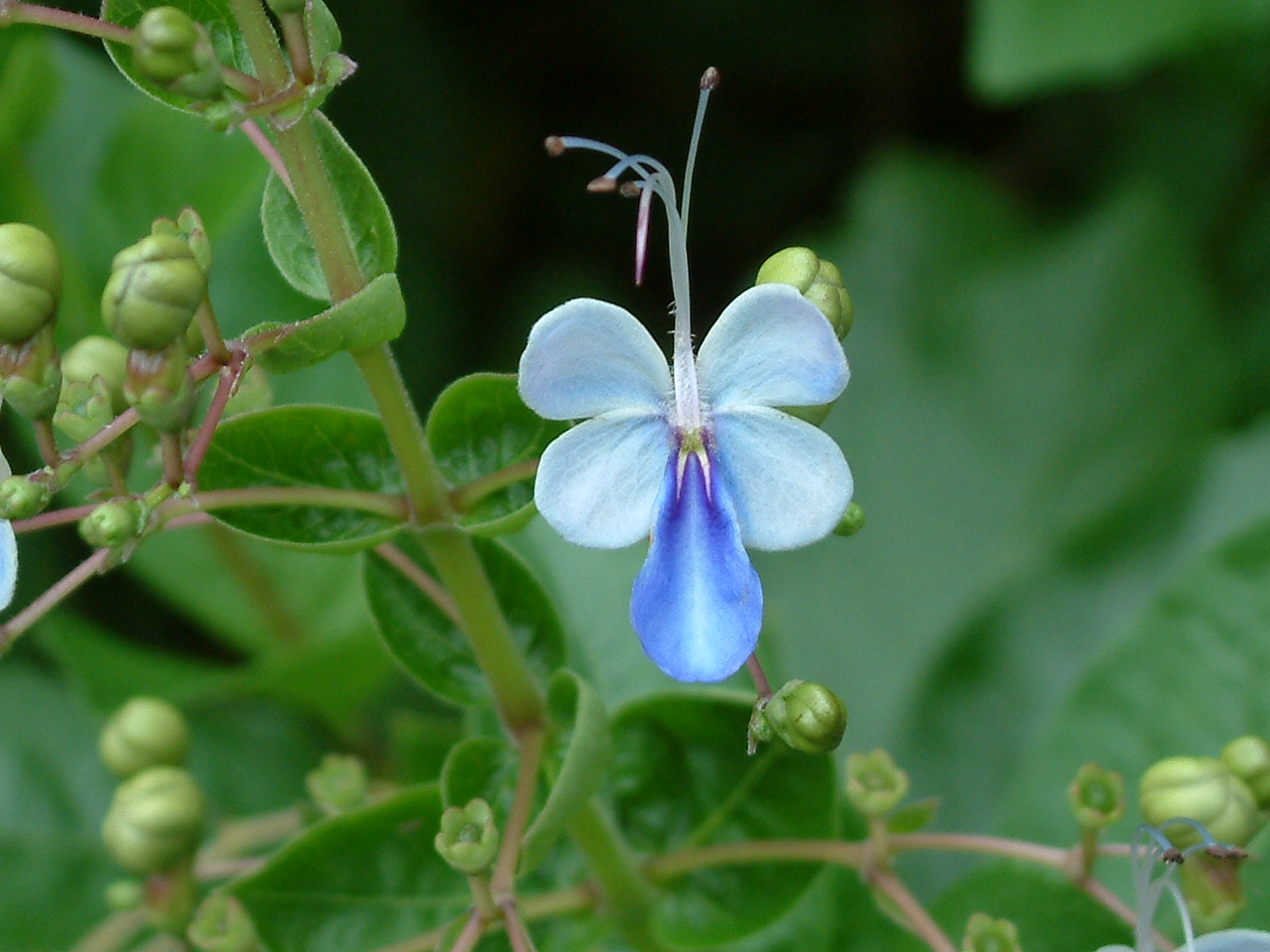
by Beth Bolles | Sep 2, 2014
Many species of butterflies are flitting through summer gardens but a special butterfly has recently made its appearance in perennial gardens. The Blue butterfly bush, Clerodendrum ugandense is a mid to late summer blooming plant that has unique flowers resembling butterflies.
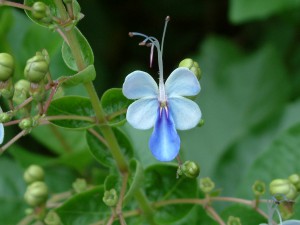
Photo: Beth Bolles, UF IFAS Extension Escambia County
During our hottest days, light blue flowers appear above attractive green foliage. Plants may grow between 6 and 10 feet in height when provided with partial shade and moisture during the warm season. Although butterfly bush is a frost sensitive plant, it will likely return from the roots in hardiness zones 8 and 9. Even when replanted in the spring, it grows well enough that you will enjoy a flowering display by summer’s end. Plant your butterfly bush to accommodate a spreading growth habit and where garden visitors can get a close view of the interesting flowers.
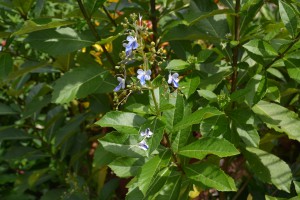
Flower panicles. Photo: Beth Bolles, UF IFAS Extension Escambia County
















